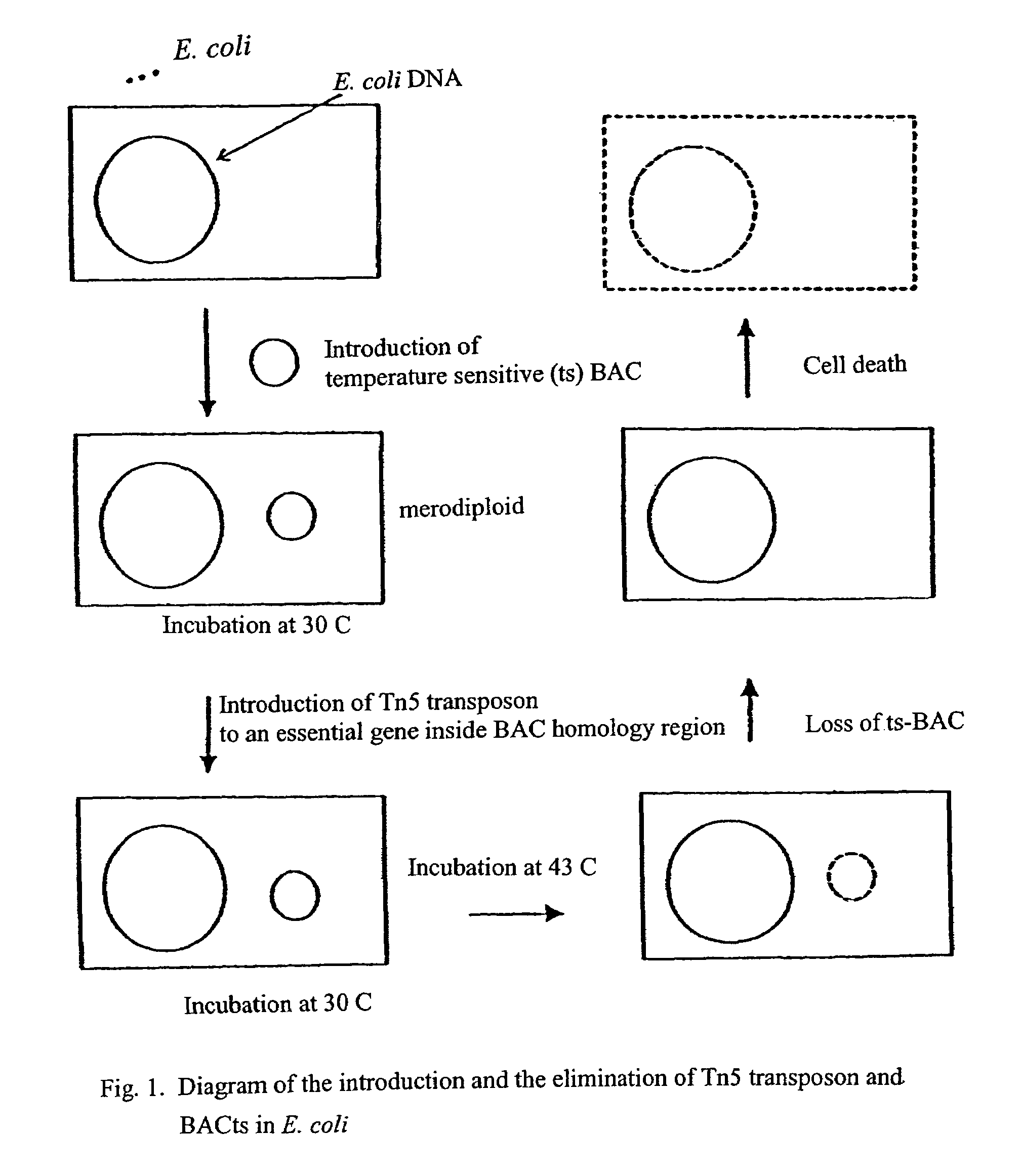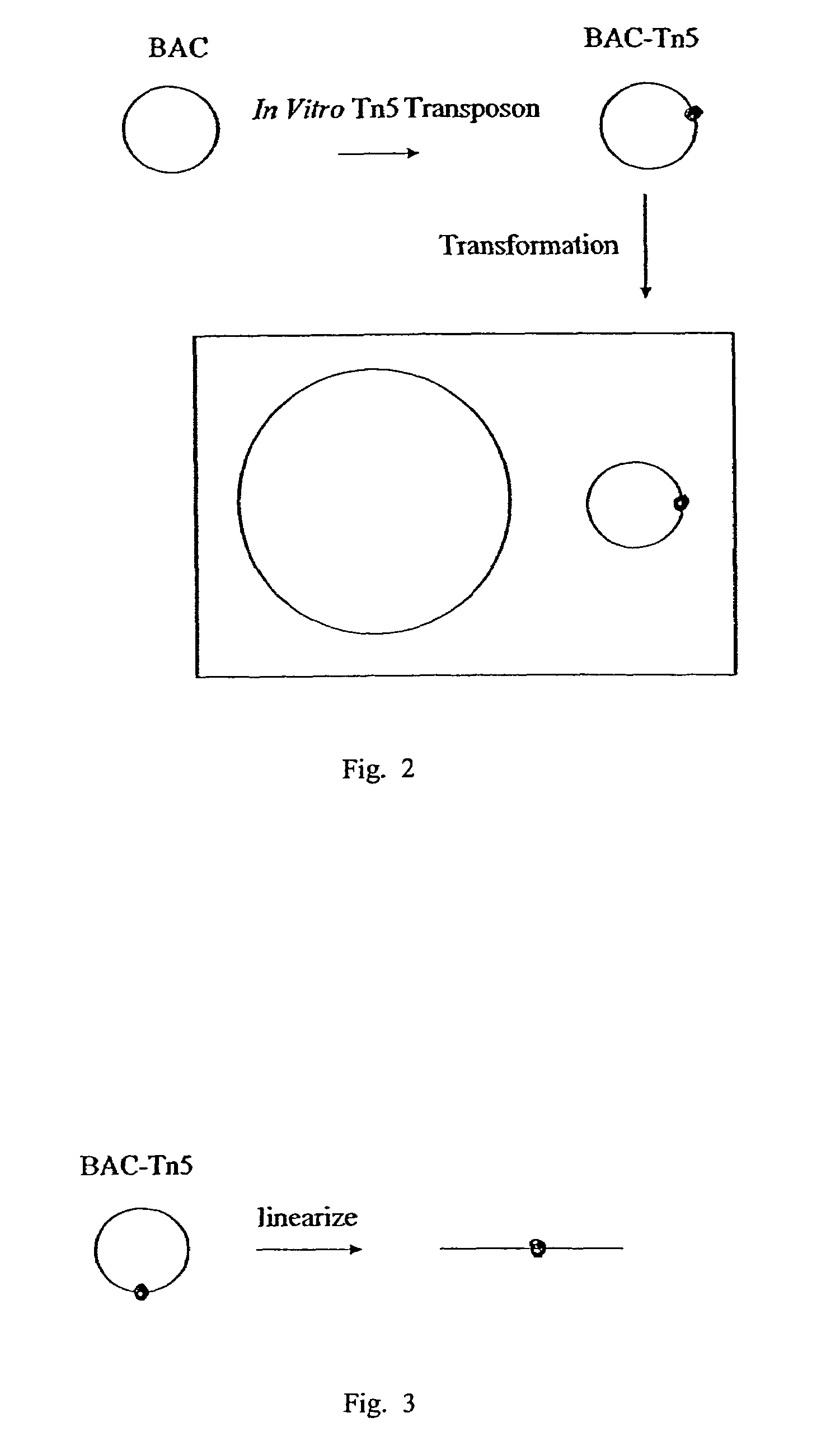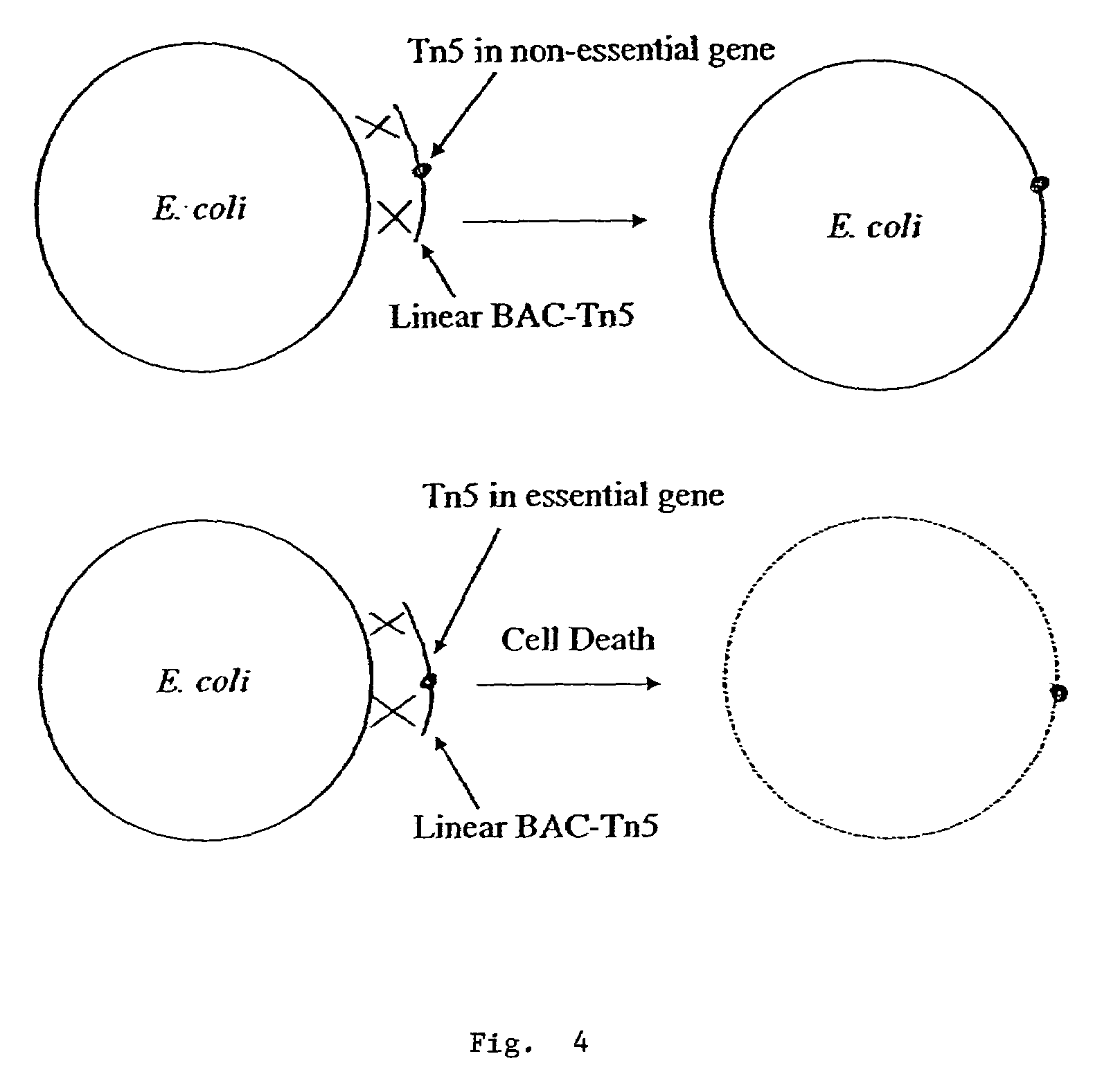Methods for identifying an essential gene in a prokaryotic microorganism
- Summary
- Abstract
- Description
- Claims
- Application Information
AI Technical Summary
Benefits of technology
Problems solved by technology
Method used
Image
Examples
example 1
[0064]Merodiploid cells test cells were prepared using E. coli as host cell and as provider of DNA segments that were inserted into bacterial artificial chromosomes that were engineered to be temperature sensitive for replication (BACts). The E. coli host cells were transformed with the BACts and then the merodiploid cells were randomly transformed in vivo with Tn5 transposon. Following insertion of Tn5 into the merodiploid cells, six different clones could be expected, as shown in Table 1 below, depending on the insertion location of Tn5 in the merodiploid test cells. The BACts and the transposon, Tn5, were tagged by Chloramphenicol (Cm) and Kanamycin (Km) resistance markers, respectively. The drug resistance markers were used to detect the presence of BACts and Tn5 in the transformed cells.
[0065]
TABLE 1Growth atGrowth at30 C on LB +Growth at43 C onLocation of Tn5KM + Cm43 C on LB +LB plate43 C +Clone TypesTransposonplateKm plate(No drug)CmNo TransposonNoNoYesNoTransposon innon-ess...
example 2
[0068]In an alternative method for preparation and screening of merodiploid BAC-carrying test cells, Tn5 was inserted into the BACts to create a temperature sensitive BAC designated BAC-Tn5. General recombination during replication is used to replace a gene in the E. coli chromosome with its homologous knockout gene on BAC-Tn5. If the knockout gene in the BAC-Tn5 is not essential, the replacement becomes successful upon transformation, presenting viable Km resistant colonies. On the other hand, if the knockout occurred in an essential gene, when replacement is completed by recombination, it leads to no production of Km resistant colony. In this way, one can identify essential genes by scoring Km resistant colonies.
[0069]In this method the BAC-Tn5 was constructed by insertion of Tn5 into the BAC in vitro, instead of transposing Tn5 onto BAC in vivo as described above in Example 1. The resultant BAC-Tn5 was used to transform E. coli. This process is illustrated in FIG. 3. In this prot...
PUM
| Property | Measurement | Unit |
|---|---|---|
| Fraction | aaaaa | aaaaa |
| Fraction | aaaaa | aaaaa |
| Fraction | aaaaa | aaaaa |
Abstract
Description
Claims
Application Information
 Login to View More
Login to View More - R&D
- Intellectual Property
- Life Sciences
- Materials
- Tech Scout
- Unparalleled Data Quality
- Higher Quality Content
- 60% Fewer Hallucinations
Browse by: Latest US Patents, China's latest patents, Technical Efficacy Thesaurus, Application Domain, Technology Topic, Popular Technical Reports.
© 2025 PatSnap. All rights reserved.Legal|Privacy policy|Modern Slavery Act Transparency Statement|Sitemap|About US| Contact US: help@patsnap.com



